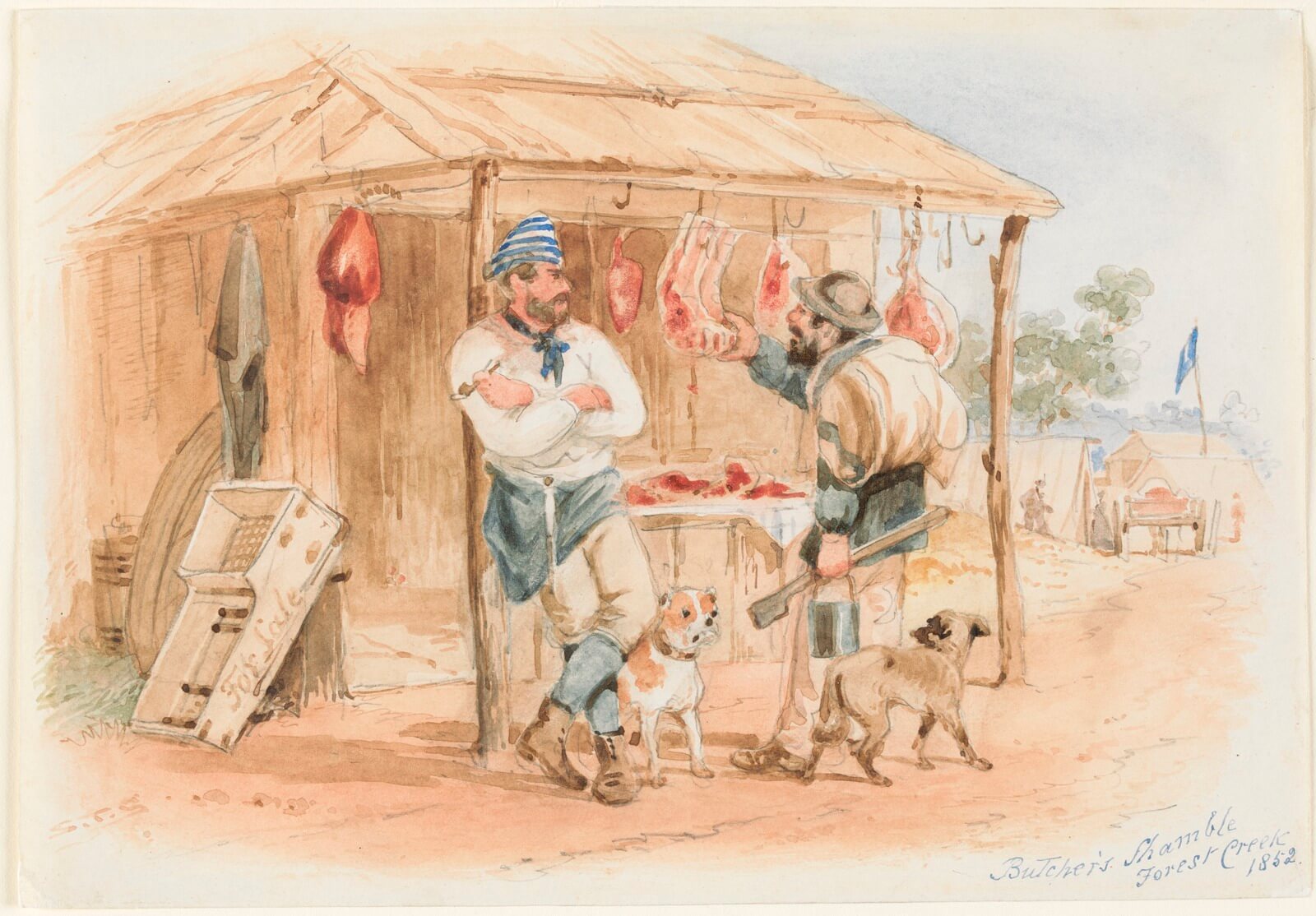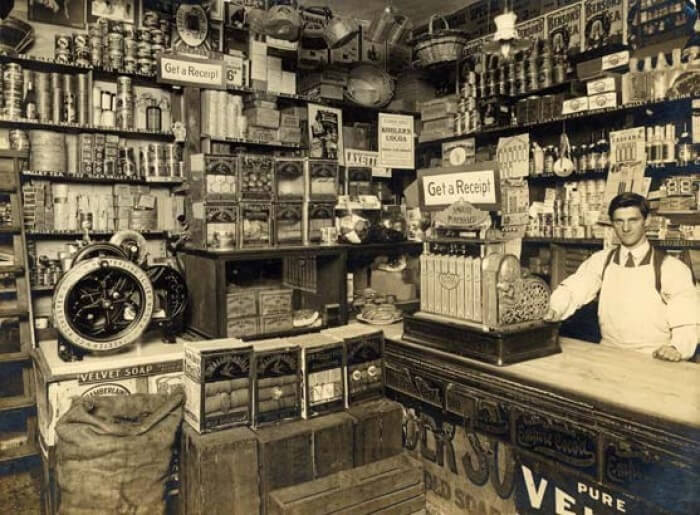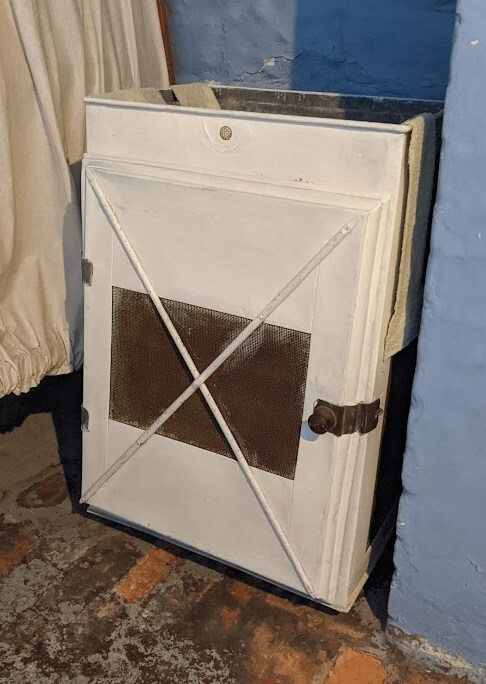Shopping, or marketing has changed enormously with the passage of time. At first the range of goods was very limited and most food stuffs were stored in the shops in bulk. Women almost always walked to the shops with their shopping baskets, sometimes on a daily basis. This continued well into the twentieth century. Judith Smart recalls her mother trundling her shopping buggy down to the shops each day to buy the food for the family’s meal that evening.
Butcher’s Shambles Forest Creek, 1852 by S T Gill
Reproduced courtesy State Library Victoria
Butcher’s shops were sometimes referred to as ‘shambles’, generally indicating that animals were also slaughtered there. This makeshift shop was sketched by S T Gill at the Forest Creek gold field in 1852. Preserving meat was a major challenge in Australia before refrigeration was available and meat had to be slaughtered and eaten quickly, especially in the warmer months. The meat might have been tough as a result, since often it could only hang overnight.
B.Bolton, family grocer Port Melbourne, c.1913. Photographer Algernon Dargy
Reproduced courtesy State Library Victoria
The family grocer shop was often crammed from floor to ceiling with goods and each customer was served personally. A ladder used to access the upper shelves is visible to the left of the photograph. On the counter stands an ornate cash register while the grocer himself wears a spotless white apron.
Until the late-nineteenth century it was impossible to preserve fresh foods, especially in the summer months, and purchasing perishables in small quantities was often the only option. Although iceboxes were invented in the United States early in the nineteenth century, they depended on a reliable supply of ice. That became possible in Melbourne from the 1880s as local firms invented processes for manufacturing ice. Thereafter the ‘iceman’ was a common sight on the roads, delivering blocks of ice to households for their iceboxes. The ice box was the most common means of keeping perishable food fresh until at least the 1940s, although many households also used variants of the Coolgardie safe, a metal box cooled by evaporation from wet hessian bags. As the name implies, the Coolgardie safe was first invented on the West Australian goldfields, but was popular wherever ice supplies were either unavailable, or too expensive. In regional areas ice was far less available and rural women sometimes resorted to storing their milk, butter and cream in local creeks.
The refrigerator
Not surprisingly, the refrigerator was often at the top of the list of desirable domestic appliances. The first models were invented in the early twentieth century, but they did not become commonplace in Victorian homes until after the Second World War. One model was invented to run on kerosene, but from the 1930s electric refrigerators were increasingly common. Several firms began local manufacturing in the 1930s, but sales really took off after the war. It was estimated that 90 per cent of Australian households owned a refrigerator by 1960. At first the freezing capacity of these refrigerators was limited. Freezing compartments were small and poorly sealed, meaning that foods like ice cream could not be kept for long. In the 1960s ice cream was sold for household consumption packaged in cardboard ‘bricks’ and was meant to be consumed at a meal. By the 1970s larger freezing compartments and the expansion of plastic packaging meant that ice cream began to be sold in larger tubs, to last a household for a week or more.




